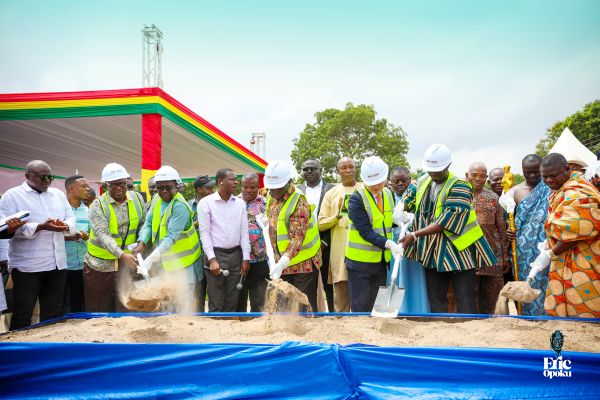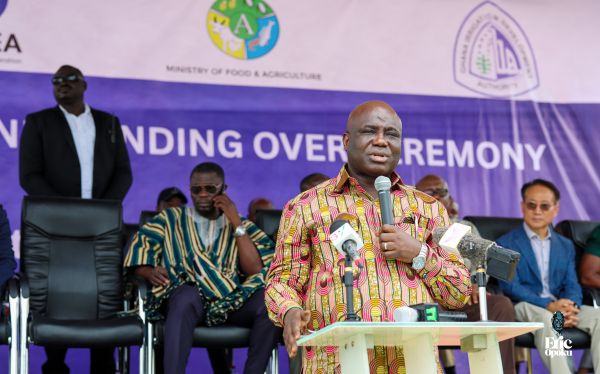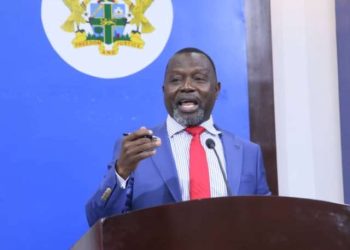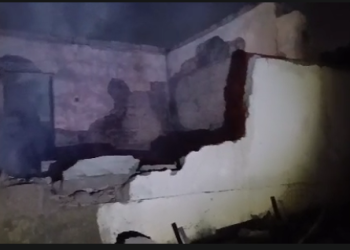The Minister of Food and Agriculture, Eric Opoku, has cut the sod for the commencement of rehabilitation and construction works on the Ashaiman Irrigation Scheme.
This would be the first time in 5 decades that the scheme, which serves the over 300,000 people of Ashaiman, will see any renovation.
The project, undertaken in partnership with the Korea International Cooperation Agency (KOICA), will also enhance the water management system of the facility.
The Agric Minister said the rehabilitation of the project is in line with the government’s vision of moving away from the decades-long dependence on rain-fed agriculture to an irrigation-fed agricultural system nationwide.
He indicated that the government is laying a foundation for agriculture to take its place as a key sector of the economy, with the first pillar being “Irrigation for Agriculture”.
Opoku noted that Ghana is endowed with vast agricultural potential, which can be harnessed with the right investment, thereby empowering farmers and creating jobs for the youth.
He disclosed that the Ministry has taken inventory of all irrigation infrastructure in the country and has realised that only about 226,000 hectares of the 1.9 million hectares of irrigable land are under irrigation, with most irrigation infrastructure broken down.
Given this, he said that the government is committed to rehabilitating the existing irrigation infrastructure around the country to make water available for the Ghanaian farmer in the field.
He outlined some proposed projects which will soon be commenced in the coming months.
The Agric Minister also said that the Ministry will provide 250 solar-powered boreholes to farmers on their fields.

He said, “We are doing this for our own benefit. So we must take full ownership and ensure that we protect these assets.”
He ended by assuring the chiefs and people of Ashaiman that his Ministry would liaise with the National Security outfit to eject all persons who have encroached and built upon the land designated for the irrigation scheme.
The Municipal Chief Executive of the Ashaiman Municipal Assembly, Freeman Tsekpo, said the municipality is primed for the production of staples.
According to him, Ashaiman has the potential to produce about 200 metric tonnes of onion, about 218 metric tonnes of maize and 98 metric tonnes of rice.
This potential, he said, had been stymied by the uncompleted irrigation scheme and encroachment by property developers over the years.
Tsekpo was convinced that the commencement of the rehabilitation project would enhance agriculture in the community and facilitate all-year-round food production.
The Regent of Ashaiman, Nii Anang Adjor, called on the government to integrate the traditional authorities into the management of the irrigation system, as is done elsewhere in the country.
He also criticised the political mismanagement and partitioning of the lands in the catchment area of the scheme, as well as the encroachment, which has led to the pollution of the water in the reservoir.
He called for the formation of a task force to protect the irrigation scheme.
Country Director of KOICA Ghana, Dong Hyun Lee, said the event is not just about breaking ground, but “it’s about investing in the people of Ashaiman.”
Speaking directly to the enthusiastic farmers who thronged the event, he said, “Farmers here today, this is for you. The Korean people stand with you and support you.”











